IES Cares – A Corporate Social Responsibility Success Story
Posted on July 17th, 2016 Read time: 5 minutes
By Sean Ring, Business Development Manager
Corporate Social Responsibility (CSR) has been a popular business term for at least 20 years now, and although most people would say that they understand the premise, the vast majority of us would struggle to actually define it off the top of our head. CSR can take many shapes, forms, and angles, making it difficult to summarize into a single, umbrella definition. I have been fortunate to spend the last 2.5 years working for an amazing company who has shed significant light on the subject for me, both from a theoretical as well as a practical perspective.
A brief history of CSR:
In the United States, CSR in its most raw forms dates all the way back to the 1930’s, with Chester Barnard’s 1938 publication, The Functions of the Executive. In his final chapter, “The Nature of Executive Responsibility” he discusses morality. Barnard observes that “cooperation, not leadership, is the creative process; but leadership is the indispensable fulminator of its forces.” In essence, morality is critical to leadership: “organizations endure… in proportion to the breadth of the morality by which they are governed. “ For me, one of the earliest sightings of CSR still rings true as one of the key tenets of a successful organization; high integrity and ethical standards and practices. Fast forward to the 1980’s for two shining examples of a rapidly popularizing CSR movement. The first occurred in 1984 when the highly influential Peter Drucker wrote, in the California Management Review, about the imperative to turn social problems into economic opportunities. 5 years later, the now universally known ice-cream manufacturers, Ben & Jerry’s, were the first company to publish a social report in 1989.
Like Ben and Jerry’s, CSR has come in a myriad of flavors over the years. Unfortunately, there have been far too many examples of corporations who use CSR programs to put a positive PR spin on the shady practices that are truly going on behind the curtain. Don’t get me wrong, positive PR is one of the many benefits that a business can expect to garner from a high performing CSR program, but as I feel is true with everything in life, it is not what you do, but rather why you do it that truly makes the difference.
CSR from a Practical Standpoint
Ok, enough with the history lesson, let’s talk real life CSR. Many people ask me whether or not it is possible to cut through the soft and fuzzy exterior of a CSR to reveal something that truly benefits the community, our employees and company profitability all at the same time? This trifecta of goodness is also known as the “Triple Bottom Line”, and was coined by John Elkington in 1994. My direct experiences tell me that the answer to this question is yes, and I am about to tell you how.
My hand on CSR experiences are directly correlated to my time at Innovative Employee Solutions (IES), a San Diego based B2B provider of Employer of Record (EOR) Payrolling services. During the interview process at IES I was inquisitive about their “Community Outreach Program” and as I learned about what they were doing, not only did I become more intrigued, but IES quickly became my top prospect, and in large part it was their amazing culture that stood out, with community outreach as a fundamental piece of that culture. In December of 2013, I joined the team at IES and have not looked back since! One of my first objectives was to figure out what this Community Outreach Program was all about and how I could get involved. Very little digging was required, it turned out that my new company was offering uncapped paid time off for volunteering. Yes, you read that correctly, IES offers UNCAPPED PTO FOR VOLUNTEERING! Within the first few weeks I was presented with numerous opportunities to volunteer with a variety of local non-profits both on and off the clock. I absolutely loved every single aspect of this program, and even coined the term “soul salary” as a benefit that IES offers as I was reflecting on my feelings leaving the San Diego Food Bank after 3+ hours sacking potatoes one afternoon. I was, and still am, so incredibly happy and overwhelmingly proud that I work for a company who pays me to go do something positive for the community. To me, it was a stake in the ground that clearly displayed that giving back to the community in which we thrive was a top priority for this firm. Nine months later, my enthusiasm and passion for volunteerism led me from eager participant to chairman of the Community Outreach Committee.
Fast forward one year and our Community Outreach program was thriving and even had its own name, IES Cares, which was coined after we volunteered more than 120 hours in a one week period in June of 2015 aka IES Cares Week. As I sit here today, I am proud to say that we have increased our total hours volunteered each year, growing from 450 hours in 2014 to a staggering 850 hours in 2015. Keep in mind that we have less than 30 employees and so this was an average of more than 30 hours of volunteer work per employee!!! We are currently holding pace in 2016 with 450 hours volunteered through June, and our employees have volunteered at least 1 hour at over 39 different non-profits thus far in 2016. We have also had the distinct honor to be recognized with 2 consecutive American Staffing Association (ASA) Care Awards (14’, 15’), earning our small, family owned firm nationwide recognition both years at our national industry conference in front of thousands of our peers. Concurrently we have also had two of our best years as a company from a bottom line financial perspective (aka net income for you GAAPers out there), and employee engagement is running at an all-time high, with IES having earned a spot on the San Diego Business Journal’s Best Places to Work List 8 years running. There it is folks, the elusive Triple Bottom Line!
Key takeaways and a tip to take with:
For IES, the CSR program has created a virtuous cycle. We give back to the community without expecting anything in return and the community benefits. This mentality, coupled with action is attractive to talented employees both current and prospective, therefore we attract, retain, and engage talented people who strive to find a greater purpose in their work beyond just a paycheck and the security of being gainfully employed. Talented and engaged employees take ownership of their roles and then create efficient systems and high performing departments across all functions, which then lead to both top and bottom line growth of the business. Don’t get me wrong, creating a CSR program will not lead your business to succeed on its own. CSR is an element that can add significant value to all stakeholders in an already established, and proven business model. That being said, we are currently gearing up for our August 2016 appearance at San Diego Business Journal’s Best Places to Work Awards and we ALWAYS expect to be at or near the top of the list. If you are considering building a CSR program of your own, my best advice is to ask your employees what they care about and build a CSR program that aligns with your current clients, what your employees care about, and any causes that ownership has consistently supported. The likelihood of creating a long lasting, successful CSR program is much greater if you let the employees build it themselves. I hope this was helpful to you in some way, shape or form and please feel free to call me directly if you are looking for a CSR sounding board or just want to chat. I am super excited to see the CSR movement continue to flourish and am happy to help anyone as they look to capture the elusive Triple Bottom Line!
Related Articles
Posted on July 17th, 2016 Read time: 5 minutes
By Sean Ring, Business Development Manager
Corporate Social Responsibility (CSR) has been a popular business term for at least 20 years now, and although most people would say that they understand the premise, the vast majority of us would struggle to actually define it off the top of our head. CSR can take many shapes, forms, and angles, making it difficult to summarize into a single, umbrella definition. I have been fortunate to spend the last 2.5 years working for an amazing company who has shed significant light on the subject for me, both from a theoretical as well as a practical perspective.
A brief history of CSR:
In the United States, CSR in its most raw forms dates all the way back to the 1930’s, with Chester Barnard’s 1938 publication, The Functions of the Executive. In his final chapter, “The Nature of Executive Responsibility” he discusses morality. Barnard observes that “cooperation, not leadership, is the creative process; but leadership is the indispensable fulminator of its forces.” In essence, morality is critical to leadership: “organizations endure… in proportion to the breadth of the morality by which they are governed. “ For me, one of the earliest sightings of CSR still rings true as one of the key tenets of a successful organization; high integrity and ethical standards and practices. Fast forward to the 1980’s for two shining examples of a rapidly popularizing CSR movement. The first occurred in 1984 when the highly influential Peter Drucker wrote, in the California Management Review, about the imperative to turn social problems into economic opportunities. 5 years later, the now universally known ice-cream manufacturers, Ben & Jerry’s, were the first company to publish a social report in 1989.
Like Ben and Jerry’s, CSR has come in a myriad of flavors over the years. Unfortunately, there have been far too many examples of corporations who use CSR programs to put a positive PR spin on the shady practices that are truly going on behind the curtain. Don’t get me wrong, positive PR is one of the many benefits that a business can expect to garner from a high performing CSR program, but as I feel is true with everything in life, it is not what you do, but rather why you do it that truly makes the difference.
CSR from a Practical Standpoint
Ok, enough with the history lesson, let’s talk real life CSR. Many people ask me whether or not it is possible to cut through the soft and fuzzy exterior of a CSR to reveal something that truly benefits the community, our employees and company profitability all at the same time? This trifecta of goodness is also known as the “Triple Bottom Line”, and was coined by John Elkington in 1994. My direct experiences tell me that the answer to this question is yes, and I am about to tell you how.
My hand on CSR experiences are directly correlated to my time at Innovative Employee Solutions (IES), a San Diego based B2B provider of Employer of Record (EOR) Payrolling services. During the interview process at IES I was inquisitive about their “Community Outreach Program” and as I learned about what they were doing, not only did I become more intrigued, but IES quickly became my top prospect, and in large part it was their amazing culture that stood out, with community outreach as a fundamental piece of that culture. In December of 2013, I joined the team at IES and have not looked back since! One of my first objectives was to figure out what this Community Outreach Program was all about and how I could get involved. Very little digging was required, it turned out that my new company was offering uncapped paid time off for volunteering. Yes, you read that correctly, IES offers UNCAPPED PTO FOR VOLUNTEERING! Within the first few weeks I was presented with numerous opportunities to volunteer with a variety of local non-profits both on and off the clock. I absolutely loved every single aspect of this program, and even coined the term “soul salary” as a benefit that IES offers as I was reflecting on my feelings leaving the San Diego Food Bank after 3+ hours sacking potatoes one afternoon. I was, and still am, so incredibly happy and overwhelmingly proud that I work for a company who pays me to go do something positive for the community. To me, it was a stake in the ground that clearly displayed that giving back to the community in which we thrive was a top priority for this firm. Nine months later, my enthusiasm and passion for volunteerism led me from eager participant to chairman of the Community Outreach Committee.
Fast forward one year and our Community Outreach program was thriving and even had its own name, IES Cares, which was coined after we volunteered more than 120 hours in a one week period in June of 2015 aka IES Cares Week. As I sit here today, I am proud to say that we have increased our total hours volunteered each year, growing from 450 hours in 2014 to a staggering 850 hours in 2015. Keep in mind that we have less than 30 employees and so this was an average of more than 30 hours of volunteer work per employee!!! We are currently holding pace in 2016 with 450 hours volunteered through June, and our employees have volunteered at least 1 hour at over 39 different non-profits thus far in 2016. We have also had the distinct honor to be recognized with 2 consecutive American Staffing Association (ASA) Care Awards (14’, 15’), earning our small, family owned firm nationwide recognition both years at our national industry conference in front of thousands of our peers. Concurrently we have also had two of our best years as a company from a bottom line financial perspective (aka net income for you GAAPers out there), and employee engagement is running at an all-time high, with IES having earned a spot on the San Diego Business Journal’s Best Places to Work List 8 years running. There it is folks, the elusive Triple Bottom Line!
Key takeaways and a tip to take with:
For IES, the CSR program has created a virtuous cycle. We give back to the community without expecting anything in return and the community benefits. This mentality, coupled with action is attractive to talented employees both current and prospective, therefore we attract, retain, and engage talented people who strive to find a greater purpose in their work beyond just a paycheck and the security of being gainfully employed. Talented and engaged employees take ownership of their roles and then create efficient systems and high performing departments across all functions, which then lead to both top and bottom line growth of the business. Don’t get me wrong, creating a CSR program will not lead your business to succeed on its own. CSR is an element that can add significant value to all stakeholders in an already established, and proven business model. That being said, we are currently gearing up for our August 2016 appearance at San Diego Business Journal’s Best Places to Work Awards and we ALWAYS expect to be at or near the top of the list. If you are considering building a CSR program of your own, my best advice is to ask your employees what they care about and build a CSR program that aligns with your current clients, what your employees care about, and any causes that ownership has consistently supported. The likelihood of creating a long lasting, successful CSR program is much greater if you let the employees build it themselves. I hope this was helpful to you in some way, shape or form and please feel free to call me directly if you are looking for a CSR sounding board or just want to chat. I am super excited to see the CSR movement continue to flourish and am happy to help anyone as they look to capture the elusive Triple Bottom Line!






